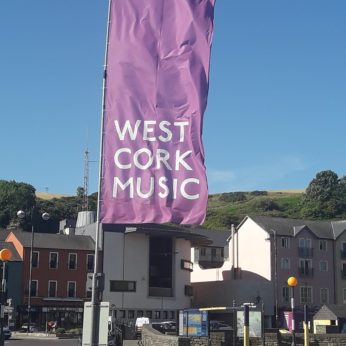Composer: Johannes Brahms (b. 1833 - d. 1897)
Performance date: 07/07/2017
Venue: St. Brendan’s Church
Composition Year: 1860
Duration: 00:36:23
Recording Engineer: Richard McCullough, RTÉ lyric fm
Instrumentation Category:String Sextet
Artists:
Christopher Marwood -
[cello]
Johannes Moser -
[cello]
Timothy Ridout -
[viola]
Dana Zemtsov -
[viola]
Miranda Cuckson -
[violin]
Henning Kraggerud -
[violin]

This
magnificently lyrical work is one of Brahms’ best-loved chamber
works, one where he can luxuriate in the richly romantic textures
made possible by the two extra lower strings. String sextet was a
choice of medium that side-stepped his apprehensions about composing
symphonies, because of what he famously called the
tramp of giants behind
him; it also evaded facing up to the most essential chamber music
medium of all, the string quartet. In fact he had been writing string
quartets all along, but he did not let one out until some twenty
attempts had been confined to oblivion. He claimed to have papered
the walls and ceiling of his room in Hamburg with his discarded
scores.
Brahms
often consulted his good friend the star violinist and composer,
Joseph Joachim, when writing for strings. He sent Joachim the first
draft of his score with a typically downbeat note: I’m
afraid that as I’ve tarried so long over the piece, your
expectations will not have been raised! But since God makes all
things possible, I am sending you the parts, in case the Rondo should
strike your fancy…I look forward to being invited soon to a
rehearsal. However, if you don’t like the piece, then by all means
send it back to me. Joachim
made some suggestions that Brahms accepted, including assigning the
opening statement of the first movement’s theme to the first cello
rather than to the first violin and, indeed, at times it seems that
it is the cello rather than the violin leads the ensemble.
The
extra cello makes a huge difference as the second cello can be
entrusted with the bass line while the first cello can take wing with
one soaring melody after another. From the first bar we know we are
in one version of lyrical heaven. Out of the cadence of this
deliciously mellow theme grows a second idea accompanied by pizzicato
responses from viola and cello leading in turn to another gorgeous
melody with an undulating accompaniment. As Brahms grew older he
tended to rein in his melodic genius, but here he is still in his
twenties, hotly pursued by the beauties of his Hamburg Frauenchor,
and he allows his romantic spirit to flow unchecked. It is also the
spirit of the Ländler, the slow waltz of the Austrian countryside
that inevitably recalls Schubert’s bitter-sweet music.
The
slow movement was the result of Brahms’ intense study of classical
and baroque forms, and is an early example of his brilliant use of
variation form. But despite his rigid adherence to the theme’s
proportions, his variations so transform the theme and are so rich in
their contrasted sonorities, that they completely overwhelm the
strictness of the form. The theme itself is in D minor, giving it an
air of stern nobility, which is not entirely dispelled until the
wonderful fourth variation.
The
Scherzo is a brief and high-spirited country dance with an
irresistible rhythm; the trio is even briefer and fierier and returns
in the coda to bring the dance to an end. It takes genius to come up
with a finale that crowns a work like this and Brahms, like the other
great masters, is able for this. He gives us an unhurried,
melodically generous Rondo that cleverly brings back the mood of the
first movement, reminding us again of Schubert, his love of the
countryside and his edge of sadness, and that feeling that if only
the music could keep playing maybe the sadness could be overcome.
Brahms shows us his command of every mood, lyrical, rustic, graceful,
sad, dramatic, clever, witty, romantic and leaving us breathless at
the end.
Francis
Humphrys
Copyright © 2025 West Cork Music. All rights reserved.
Designed and developed by Matrix Internet